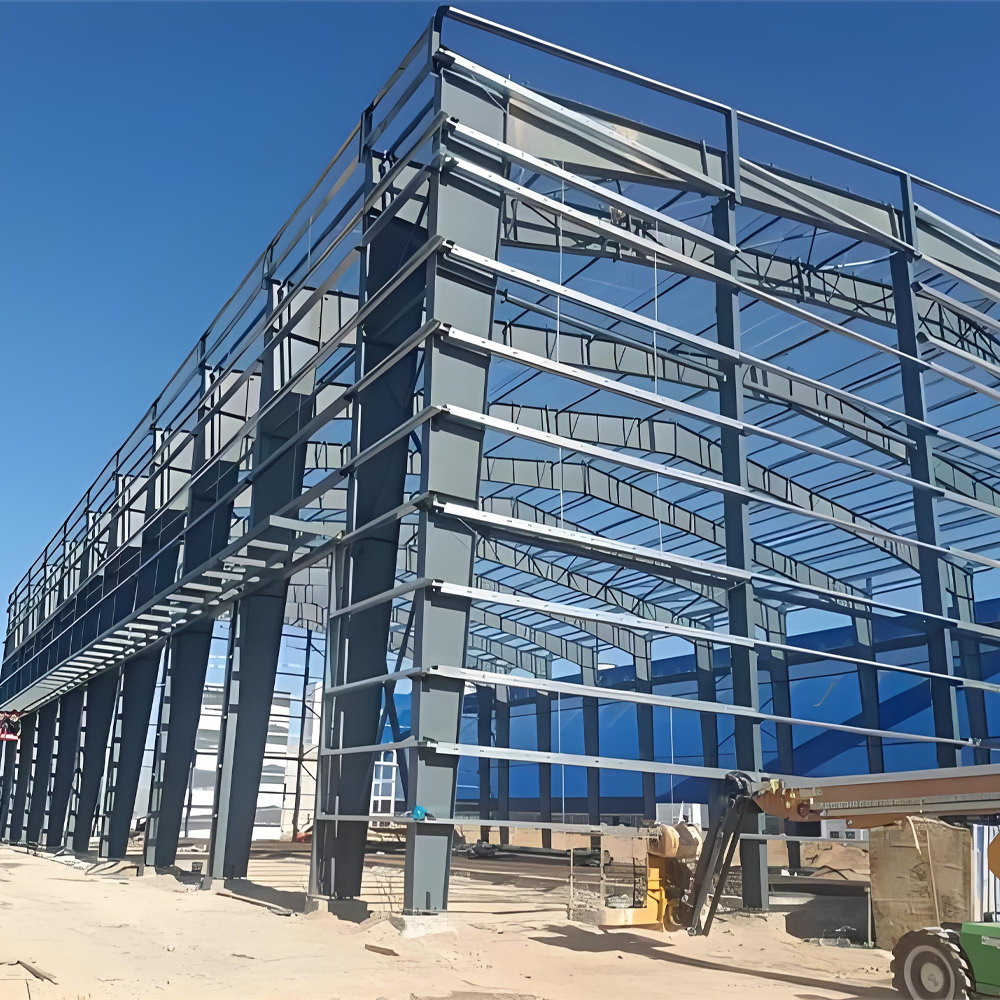Applications of Steel Structures

1.Industrial Factories
Industrial steel structure factories cater to the food, light industry, and heavy industry sectors. These factories boast structural safety, lightweight self-weight, and high strength, fulfilling the large spatial and other architectural functional requirements of modern industrial factories. Prefabricated construction ensures short durations, low costs, ease of maintenance, superior building performance, and remarkable overall economic benefits. Suitable for most industries requiring production and processing workshops, these factories also feature sleek and aesthetically pleasing exteriors.
2.Logistics and Warehousing
Steel structure warehouses for logistics and storage are equipped with steel platforms, racking platforms, and mezzanine racks, which, in conjunction with forklifts and hydraulic lifts, maximize warehouse space utilization for storing and retrieving goods.
3.Large-Span Structures
Steel structure factories are also employed in locations housing large military vessels or aircraft, such as aircraft assembly halls, hangars, airports, auditoriums, sports arenas, bus stations, museums, exhibition centers, and other large-span structures. Take aircraft maintenance as an example; during this process, the stability of the fuselage and wings is tested through air convection. Modern factory construction utilizes steel structures to meet air convection requirements, thereby establishing their significant importance in the aviation industry.

4.Livestock Farming
Steel structure factories for livestock farming encompass poultry farms and barns for other animals. Poultry farms include chicken coops, duck houses, and goose barns, while barns for other animals include pig pens, sheepfolds, cow sheds, and steel structure pastures. Compared to traditional concrete livestock barns, all components of steel structure barns are prefabricated in factories, requiring only simple assembly at the site. Consequently, they exhibit superior structural performance and can prevent catastrophic collapses in the face of earthquakes, typhoons, and other disasters. The relatively lightweight nature of steel structures reduces injuries from falling debris.
5.Greenhouse Cultivation
Steel structure factories for greenhouse cultivation cater to the cultivation of vegetables, flowers, and herbal medicines. In recent years, the development of greenhouse cultivation has fueled the growth of light steel structure greenhouses. These greenhouses offer advantages such as high strength, lightweight, excellent seismic performance, swift construction, minimal construction work, land conservation, high factory production levels, sleek aesthetics, and are equipped with insulation, cooling, ventilation, control, and irrigation systems. These systems minimize time and space constraints, thereby facilitating production.



